David Chang's expert microwave tips (plus his amazing mashed potatoes recipe)
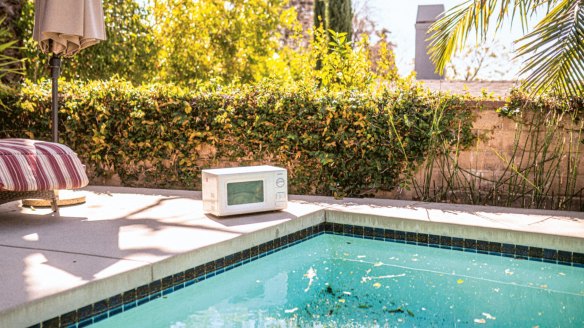
US chef and founder of Momofuku restaurant group David Chang mastered his craft the hard way: in professional kitchens, where perfectionism and precision reign over convenience and comfort.
But that's not how his mother cooked. Nor did food writer Priya Krishna's mum. In their new cookbook, Cooking At Home, the pair set out to let go of old "cheffy" habits in favour of one of the fastest and smartest ways to cook: with a microwave. Here they share some of their delicious results.
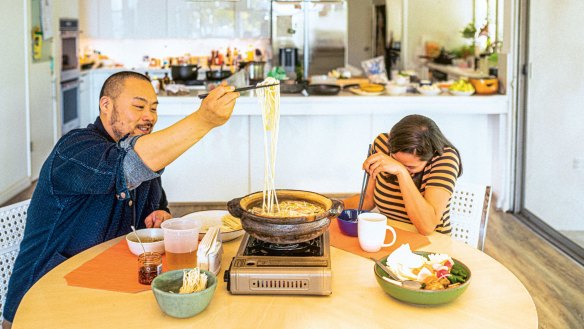
Things I love to microwave
There are microwaves collecting dust in so many American homes, and I will never understand why. I could not live without my microwave. It is the single best piece of equipment in a kitchen. Here is this machine that will save you 60 per cent of cooking time and a bunch of dishes to clean up for almost anything you make.
But I have literally been at the offices of major food publications where editors were discussing the dangers of the microwave. We use gas ranges and electric ovens ... what is the difference with a microwave? Complaints about microwaves causing cancer are patently stupid (and false).
Microwaves are a device from the future: You press a button, food turns around on a table, a bell rings, you take it out, and it's hot!
Microwaves are a device from the future: You press a button, food turns around on a table, a bell rings, you take it out, and it's hot! You want to steam vegetables? You can do it in a microwave. You want to quickly roast a head of cauliflower? Microwave it and then pop it in the oven for a little bit to get colour on it. Rock-hard pint of ice-cream? You could wait 10 minutes ... or you could microwave it for 20 seconds. Need to melt chocolate? You don't need a double boiler. You just need a microwave.
What can't a microwave do? The answer is very little. Sure, if you want to create a crunchy exterior, a microwave can't do that. You can't do elaborate baking in it, as that requires more precision (microwaves do, however, make a great mug cake – I just made my son's birthday cake in a microwave). But I use my microwave practically every day. This chapter is devoted to ingredients and dishes that I believe are especially conducive to microwaving.
Keep in mind: You can't just pop anything into a microwave and expect this glorious meal to come out. The key to success with a microwave is knowing that it's not going to do all the work for you – it is usually best used in conjunction with a stovetop or oven. It'll get your broccoli steamed and your chicken cooked, but then you'll want to finish these things elsewhere to make them really delicious. Think of your microwave like spellcheck – it won't magically make a crappy paper better, but it is an amazingly effective tool. Your microwave will serve you far better than any other fad appliance.
All that said, if you don't have a microwave and you want to make the dishes in our book, you can still do it all on the stovetop; it'll just take longer and you may have to improvise with a pan or a steamer. Or really, just go buy a microwave.
David Chang
Tips from co-author Priya Krishna: Don't just buy the cheapest, crappiest microwave you can find. I did this and it broke after just three months of testing recipes. And then Dave tried to convince me to spend a boatload of money on a fancy microwave like his, but I was too frugal for that. We met in the middle and I bought the second-least-expensive one I could find at Target that had power settings. It's been over a year and it's still whirring along. If you are less cheap than me and you bought this book, maybe it's time to invest in a nice microwave.
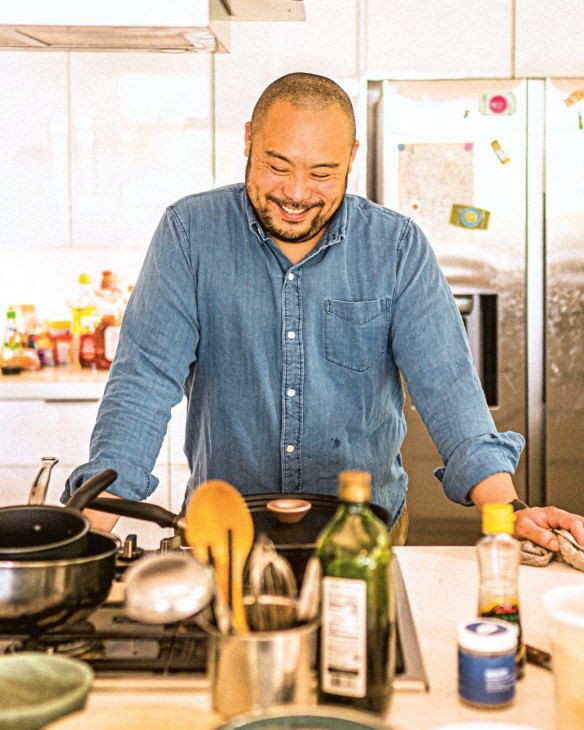
Dave's microwave best practices
- Start with small increments of time, and then increase. If you microwave something for too long, it will turn into shoe leather. Better to be overly cautious to start – you can always add more time.
- Different microwaves have different power levels. I'm not just referring to power settings. Some microwaves are simply more powerful than others. So take microwave times with a grain of salt. We are giving you ranges for a reason.
- Make sure your container is microwave safe. That usually means you'll be using glass or ceramic. But please, please don't microwave in plastic – unless it's a plastic container that is specifically labeled as microwave safe. But honestly, I personally still don't trust them. I even worked to create my own line of glass microwave bowls.
- Be careful when removing containers from the microwave! Microwaves get ripping hot. You wouldn't reach into a 200C oven without using mitts. Exercise safe container removal! Use a towel!
- If you're microwaving something super dense, like a dahl or a thick stew, take it out every so often and mix it up. This will ensure even heat distribution.
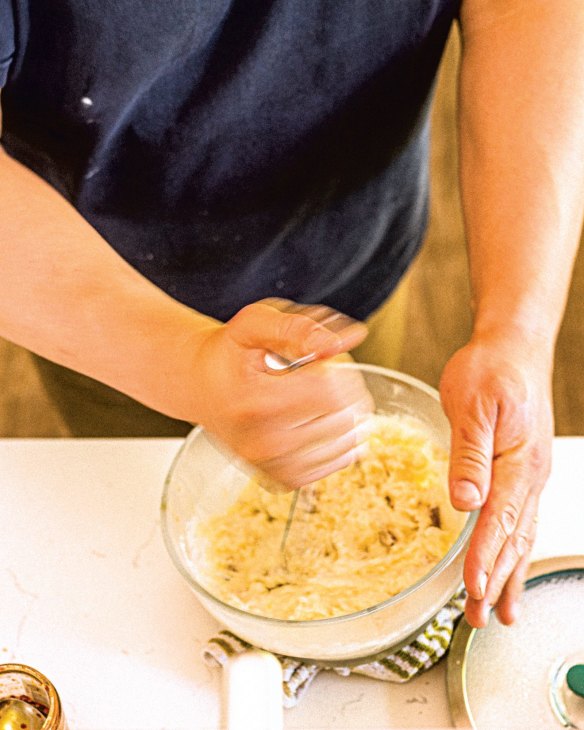
David Chang's microwave mashed potatoes
I'm telling you now, the trick to amazing mashed potatoes is adding a s---load of cream and butter and oil.
- Poke 4 large russet potatoes five times on both sides with a fork, and put them in a large microwave-safe bowl. Microwave on high for 5 minutes on each side, so 10 minutes total, or until they are cooked through.
- As soon as the potatoes are out of the microwave, peel them (or not – I don't), and mash them in a bowl with a potato masher or fork, mixing in 55 grams of salted butter.
- In a separate microwave-safe bowl, combine 470ml thickened cream, 1 garlic clove, minced, some black pepper, and a pinch of thyme leaves.
- Microwave the cream mixture on high for a few minutes, until the cream is very hot and infused with the flavours of the other ingredients. Strain the cream and gradually mix it into the potatoes, a little bit at a time.
- Then stream in a little olive oil to give the potatoes a nice sheen. You're looking for a soft, creamy, silky texture (if they're a little liquidy, it's OK – the potatoes will keep absorbing the liquid). Taste and adjust with salt.
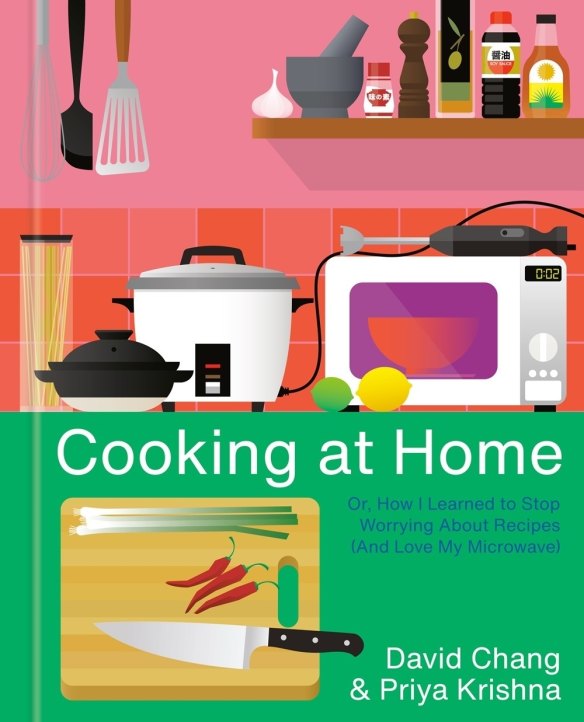
Serves 4
This is an edited extract from Cooking At Home, or How I Learned to Stop Worrying About Recipes (And Love My Microwave) by David Chang and Priya Krishna, published by Clarkson Potter, RRP $49.99. Photography by Horatio Baltz. Buy now